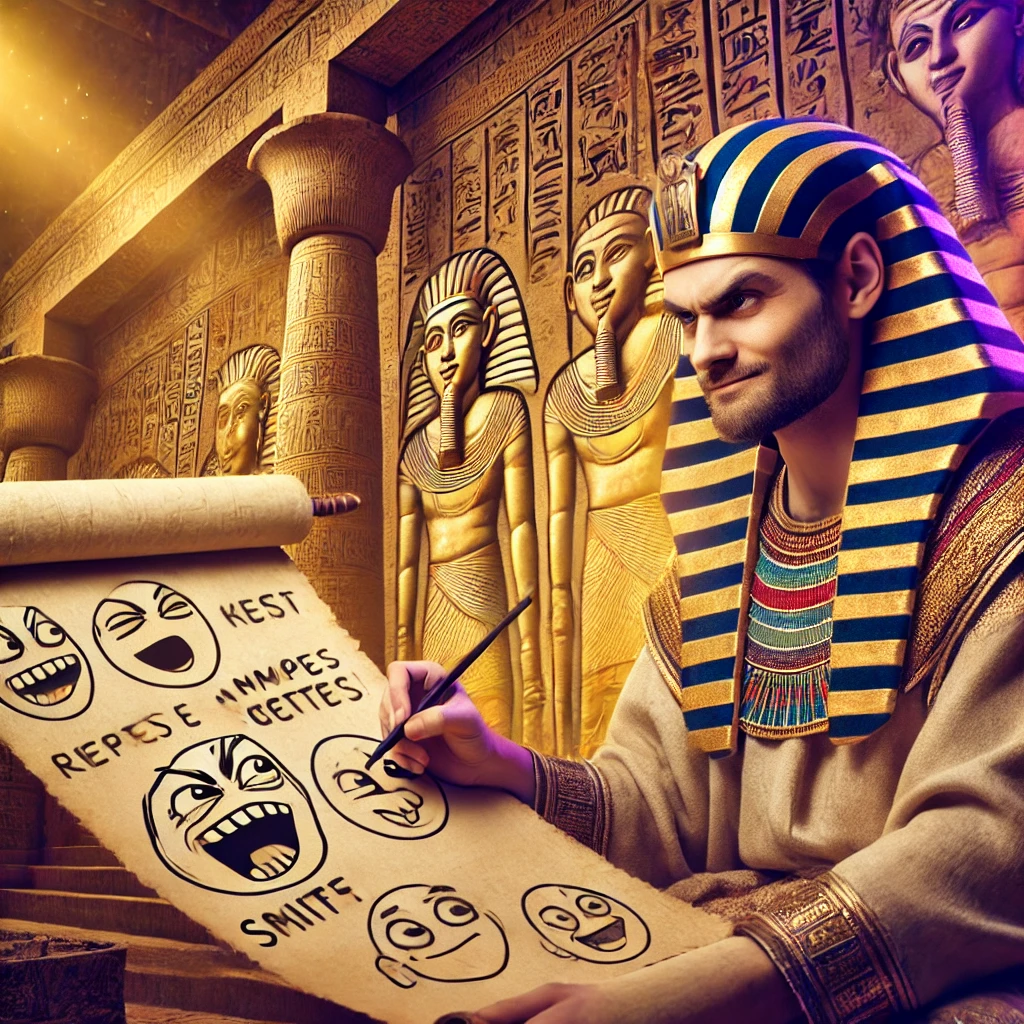Making Sense Of Nonsense Since 4:20
You ever wonder if that meme you just shared is actually connecting you to ancient civilization meme culture? Like, maybe that Egyptian scribe who was totally cracking up his friends with wall doodles was basically doing the same thing we do with our phones? The more you dig into ancient civilization meme culture, the more you realize we’re not as original as we think.
Prehistory’s Comedy Central
Picture this: You’re a Mesopotamian farmer, chiseling the world’s first dad joke onto a clay tablet. But here’s the mind-blowing part – you’re basically inventing meme culture before “going viral” meant anything beyond crop propagation.
Historical patterns reveal something wild: humans have ALWAYS been comedic creatures. And when I say always, I mean ALWAYS. Those cave paintings everyone thinks are just hunting scenes? Nah, they were basically prehistoric Reddit threads, complete with inside jokes and savage social commentary.
Take the cave art at Lascaux – archaeologists have been treating these masterpieces like serious documentation for years, but what if some of them were just the Stone Age equivalent of shitposting? That bison that looks slightly off? Maybe it was ancient civilization meme culture at its finest – the artist’s buddies probably lost their minds when they saw it.
And think about this: when ancient civilizations carved weird hybrid creatures into stone, they might have been the original surrealist meme creators. Half-human, half-bird monsters weren’t necessarily religious icons – they could’ve been the “distracted boyfriend” meme of 10,000 BCE.
Graffiti – The Original Tweet Thread
Ancient Romans were low-key comedy geniuses. Archaeological evidence suggests their city walls were basically early social media platforms. Think Twitter, but with more lead paint and sharper stone implements.
In Pompeii, we’ve found ancient civilization meme culture preserved in volcanic ash. Graffiti like “Secundus defecated here” isn’t just vandalism – it’s literally the “first!” comment of ancient civilization meme culture. Romans were absolutely trolling each other on city walls, and some poor municipal worker was the ancient equivalent of a forum moderator.
A fascinating pattern analysis of historical coincidences shows that humans fundamentally haven’t changed. We still love:
- Crude humor (Pompeii penis drawings, anyone?)
- Calling out social absurdities (Greek satirical plays were the original hot takes)
- Making fun of authority figures (Those unflattering emperor statues didn’t make themselves)
- Sharing wild stories (Homer was basically running an ancient podcast network)
So when you’re scrolling Instagram thinking you’re revolutionary? Nah. You’re just continuing a 10,000-year-old tradition of human storytelling and mockery. Ancient civilization meme culture was just working with different tools.
Universal Comedy Codec
Here’s a brain-melting concept: Humor might be our species’ most consistent communication technology. Before language, before writing, we had laughter.
Consider hieroglyphics – they’re not just writing. They’re elaborate visual jokes encoded into cultural memory. Egyptian scribes were basically stand-up comedians with better job security. And those intricate mythological stories? Complex narrative memes designed to entertain AND transmit crucial cultural information.
You know how we use memes as shorthand for complex ideas today? Ancient civilization meme culture did the exact same thing with their myths. Zeus turning into a swan to seduce someone wasn’t just a religious story – it was the ancient equivalent of a “Florida Man” headline.
Think about medieval illuminated manuscripts where monks drew knights fighting giant snails in the margins. That wasn’t religious iconography – that was straight-up ancient civilization meme culture. Those monks were bored out of their minds and basically creating the first shitpost thread.
And ancient Chinese poetry battles? Those were literally just fancy rap battles. The Tang Dynasty was absolutely throwing shade in iambic pentameter.
We’re Not More Advanced – Just More Pixelated
Our ancestors didn’t have smartphones, but they absolutely had wit. They understood something profound: Humor is how humans process complexity, challenge power, and stay sane.
Ancient civilization meme culture thrived because it served the same purpose then as it does now – it helps us make sense of a chaotic world. When Diogenes trolled Plato by bringing a plucked chicken to his lecture after Plato defined humans as “featherless bipeds,” he wasn’t just being a jerk – he was creating performance art memes.
The fact that we’re still telling that story thousands of years later proves the staying power of ancient civilization meme culture. Some jokes and concepts are so fundamental to human experience that they transcend time.
So next time you laugh at a meme, remember – you’re participating in humanity’s oldest, most beautiful tradition. From cave walls to clay tablets to papyrus scrolls to illuminated manuscripts to printed pamphlets to digital screens – the medium changes, but the message stays remarkably consistent.
Humans are weird. Humans are funny. And humans have always needed to share that weirdness and humor with each other.
mic drop 🎤
This mind-expanding journey was brought to you by The Blazed Burrow’s Tunnel Vision section. Connect the dots… or don’t.
